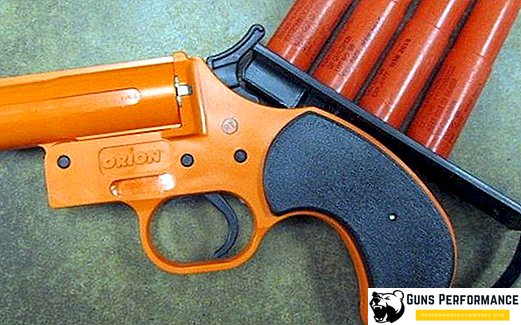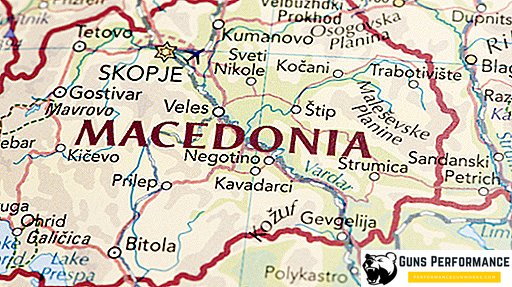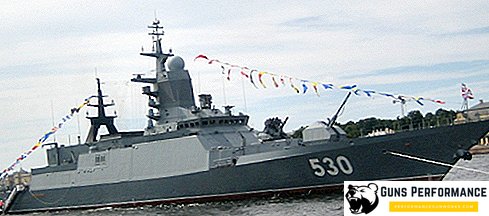Thanks to the achievements of an outstanding engineer and organizer R. Alekseev, today the only means of achieving ultra-high speeds on the water is an ekranoplan.
The ekranoplan is a technical implementation of a well-known principle: when the wing moves near a flat surface (screen), the lift increases noticeably with a minimal increase in resistance. This increase in lift is called the “screen effect”. It allows you to increase the carrying capacity of the aircraft in comparison with an object moving far from the surface, but it strongly depends on the (relative) distance from the wing to the screen and decreases rapidly with increasing this distance.
Unfortunately, when the wing moves near an agitated, "restless" surface, the essential problem of the stability of this movement arises. The instability forces one to maintain a sufficiently large altitude above the screen - as a result of which the screen effect is reduced.
This effect depends on the ratio of the height of the flight to the wing chord (its size along the direction of travel). Therefore, designers are trying to increase the chord, which for a given area inevitably leads to a decrease in wingspan (their size across the direction of motion).
This is easy to see, for example, in the photo of the model of the newest WIG, recently shown in print. In fact, in order to increase the height of the flight - with minimal loss of the screen effect - it is necessary to reduce the relative elongation of the wing, which is the main factor determining the aerodynamic quality (the ratio of lift and drag). As the same photo shows, the new WIG ratio of chord and span is approximately equal to 1, which is completely unacceptable, for example, for airplanes.
(It is interesting that the variant of the biplane, which suggests itself for low speeds, is implemented for the first time in the newly created WIG "The Seagull").
The instability of movement at the agitated surface is the main disadvantage of the wig when using it in the sea. This deficiency, according to the author, is decisive in relation to the use of such devices in marine environments. Practice has shown that even one touch of a wave at full speed leads to significant damage and can cause an accident. Thus, during the testing of an experienced ekranoplan "Orlyonok" lost part of the stern, and only personal experience and intuition of R. Alekseev, who took over the piloting, prevented the complete destruction of the ekranoplan.
The use of funds, so unreliable in marine conditions, is unacceptable.
Alternative
In the 80s as a result of research by the Central Research Institute named after Academician A.N. Krylov was proposed a new type of superhigh-speed vessel, although less fast, than an ekranoplan, but providing much greater reliability.
For velocities approximately 2 times greater than the beginning of gliding, a "wave-cutting" super-gliding trimaran (RHT) with aerodynamic unloading was proposed.

The hydrodynamic complex of this vessel includes three small extension hulls with broken contours, with a minimum freeboard and a large reverse saddle of the bow of the deck of each hull. Shells are located in a triangle in plan and are connected to a surface manned wing by racks with a width less than the width of the body. As propellers, propellers that cross the surface are suggested, for example, Arneson's propellers. To control the dynamic trim and reduce pitching, it is proposed to use feed spoilers on each hull.
The aerodynamic complex is a manned wing with a stern interceptor, located above the stern hulls, which provides the vessel with self-stabilization during gusts of headwind. The wing is connected with the stand of the nose hull with a streamlined superstructure.
It is planned to place the two main power units in the aft hulls and the ship power station - in the nose hull. The payload is located in the wing and the nose superstructure.
In fig. 2 shows a variant of a PBT with a displacement of 300 tons at a speed of 100 knots.

Key Test Results
Towing tests showed that when the Froude number in displacement is more than 5, there is a slight positive hydrodynamic interaction of the hulls, and the tests were carried out before the Froude number 7.5. Therefore, relative speeds that are 2-2.5 times higher than the speed of the start of gliding, i.e., are taken as the calculated speed range. 6.0 - 7.5.
At these relative speeds, ordinary gliders lose the stability of the longitudinal movement: on calm water, spontaneous pitching begins, the so-called “delphination” begins. However, it was not observed on the RHT model. Probably, the wing-superstructure serves as a sufficient damper.
The main result of the sea trials was the lack of slamming in the entire wavelength range and at speeds up to 55% complete. This means a significant, up to 7 - 10 times, reduction of vertical accelerations of full-scale objects on waves. Probably, there is no slamming because the hulls receive the tops of the waves on decks with reverse sheer, which reduces keel rolling.
Tests in a wind tunnel allowed us to estimate the aerodynamic quality of the RHT with the originally considered wing shape as equal to 5 (see below).
The sketchy design of light-alloy hull structures made it possible to estimate their mass, which is about 30-35% of the total displacement.
Use cases
The proposed architectural and constructive scheme can be applied in a very wide range of displacements and speeds. For example, in fig. 3 shows a record boat (with a deserted wing) for a speed of about 150 knots.

The advantage of this arrangement is that the boat will not turn over in a gust of headwind, as it does with existing racing catamarans.
A mini-ferry for 20 people at a speed of 50 knots, also with an uninhabited wing, is shown in fig. four.

The initially considered form of the habitable wing allows you to create a patrol boat carrying a helicopter, fig. five.

At the other end of the considered displacement line is the transatlantic RHT with a speed of 130 knots and a calculated wave intensity of 6 points, fig. 6

The advantages and disadvantages of PBT are summarized in the table below.
| In comparison with: | Benefits | Disadvantages. |
| Ekranoplan | Increased manageability and safety, increased propulsion efficiency | Lower achievable speeds |
| Hovercraft | Cheaper, no noise, more seaworthiness. | More towing resistance on quiet water |
| Single-hull ship on submarine automatically guided wings | More speed, less vibration, cheaper, more deck space | Slightly worse seaworthiness |
| Single body planing | No slemming, no dolphins, more deck space | More body weight constructions |
| Gliding catamaran | More achievable speeds, no slamming, self-stabilization | Less studied |
Conclusion (recommendation)
It seems obvious that constant contact with water will provide the proposed super-fast "dissecting waves" vessel with high safety both in terms of pitching and controllability.
It is recommended to consider options for such a layout when designing "super-fast" vessels of various purposes.












